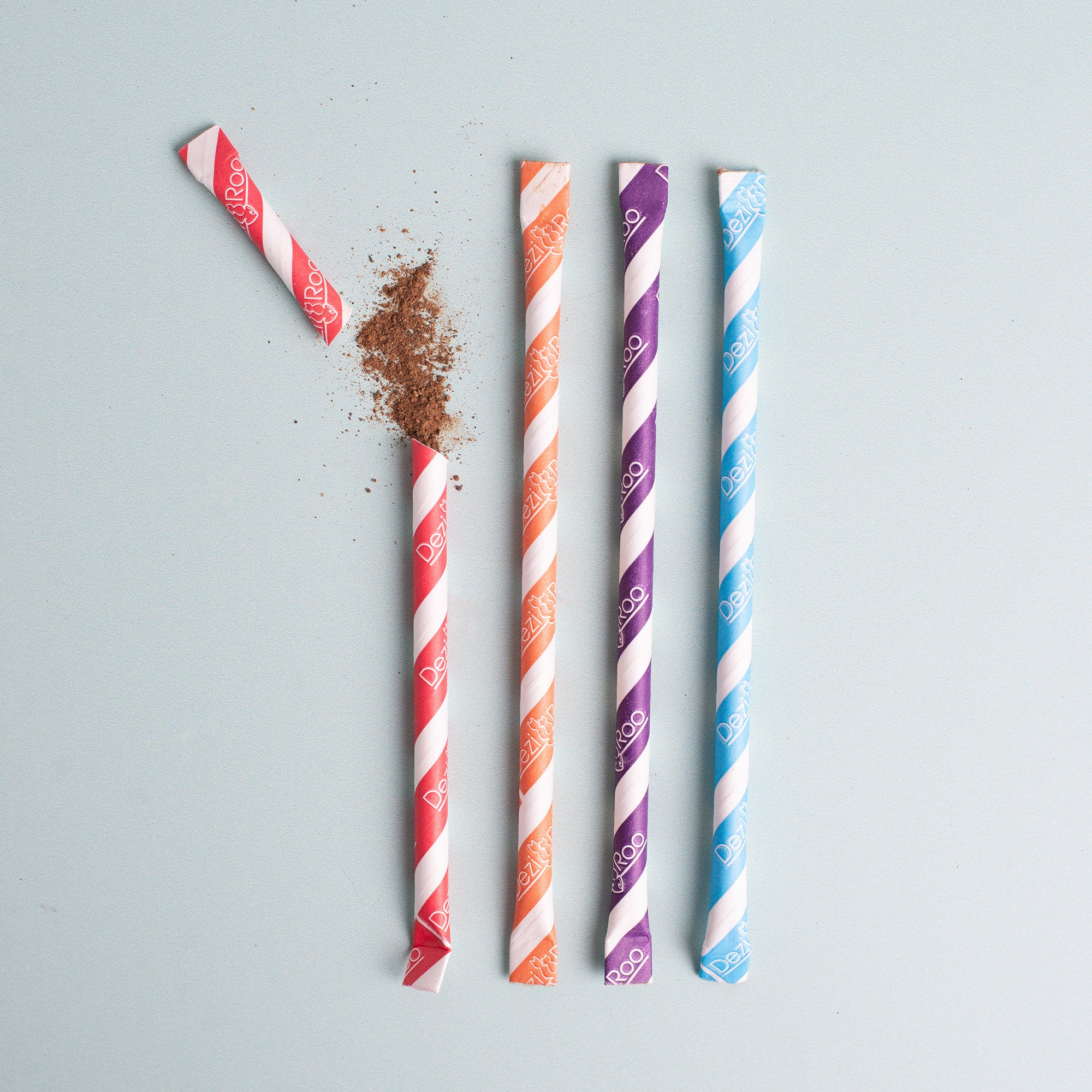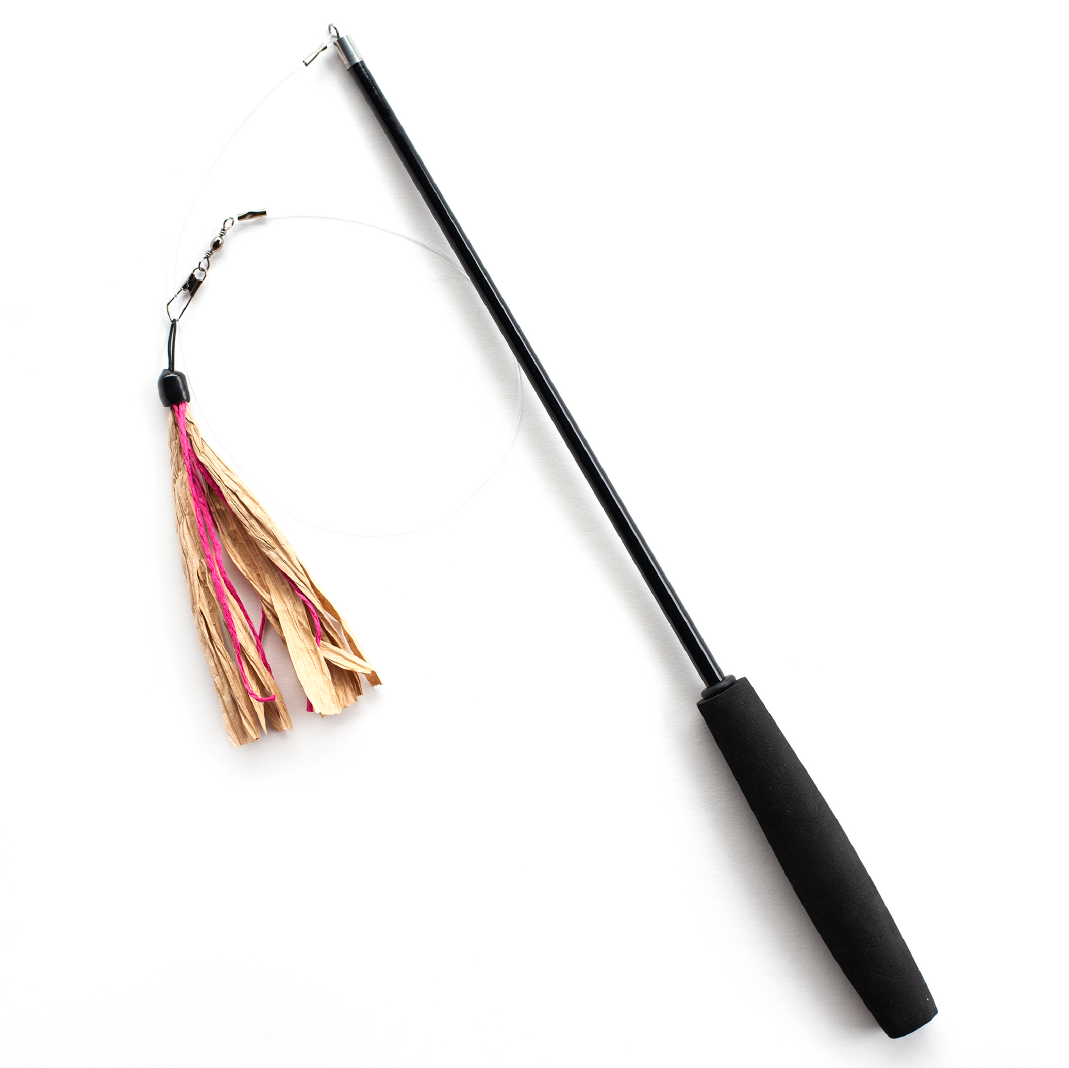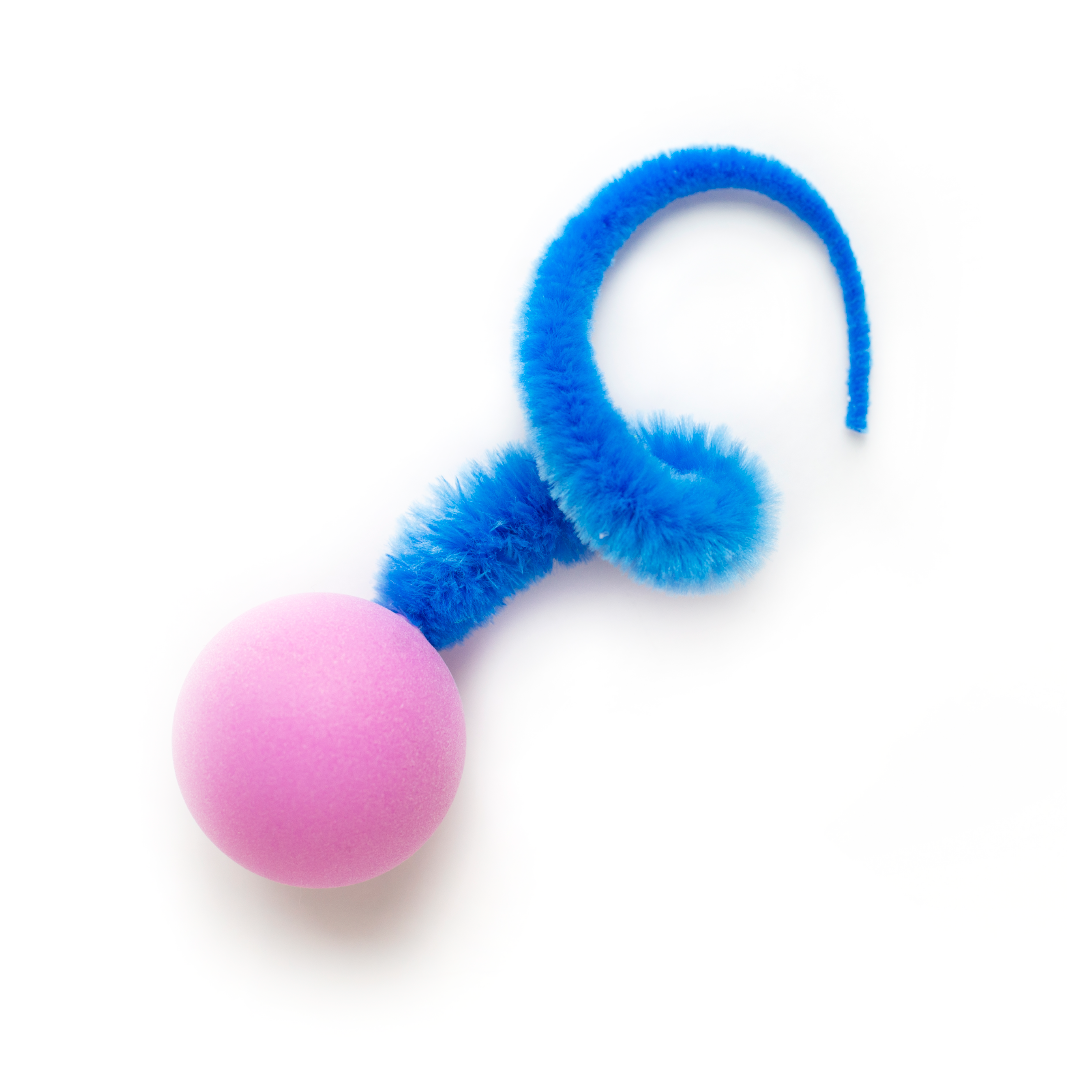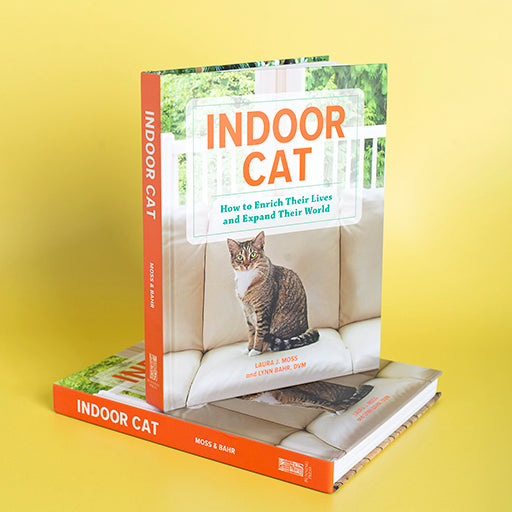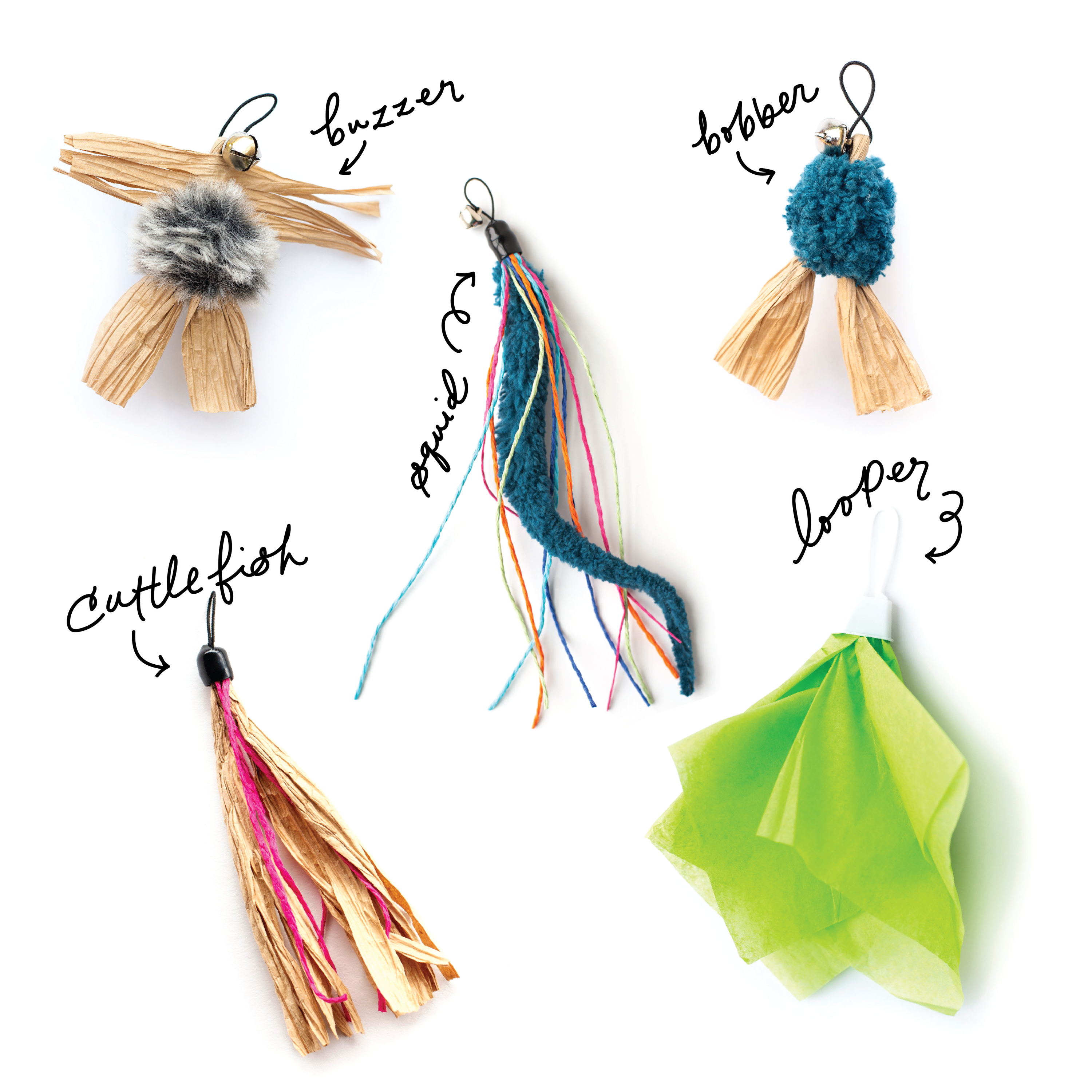Why the Material of a Cat Toy Matters

Playing with your feline bestie is a necessity to keeping them physically and mentally healthy. It can be very difficult to know the best toys to purchase for your cat, and yes, the material matters.
Cat toys may contain materials that are harmful to your cat or the environment. With the overwhelming options to choose from, being able to narrow down the list is tricky. Here’s what to look for when it comes to the material your cat’s toys are made from.
Let your cat’s hunting instincts be your guide
From old receipts to paper bags, and bits of string and hair ties, cats end up chasing just about anything around your home. But some household items, like hair ties and string, can be harmful to your cat, especially if you don’t supervise play time. In order to keep your cat happy and engaged, make sure you are choosing toys (whether bought or found) that are made from a safe material that mimics their prey. This will make your cat feel at home in its indoor environment.
A few of the top cat toys are:
- Wand toys
- Play tunnels
- Cardboard boxes
- Paper bags
- Toy mice
- Play mats
- Interactive puzzles
- Cat attractants like silver vine or catnip
-
Cat scratchers
Anything that moves like a bug, mouse, lizard, or rodent will intrigue your feline friend. But cats also like places to hide and spaces to burrow and forage. So you’ll want to provide a variety of toys and places to play.
Cardboard boxes give cats a sense of comfort and security, because they enjoy the coziness of partially concealed places. Cardboard is also an ideal surface for scratching and chewing — it’s what cats do to keep their claws and teeth healthy.
If you’re looking for a way to get your adult cat more interested in play time, try an attractant like silver vine or catnip. Silver vine is catnip’s more powerful cousin and it’s a perfectly safe treat for your cat to consume on occasion. Simply dust a small stuffed toy with a pinch and watch them go wild!
Wand toys are one of the most popular interactive cat toys because of all the different movements it can make. In fact, our Wiggly Wand has a different attachment for each day of the week. Cats love to see their “prey” slither, climb, and fly through the air, which is why cats love wand toys. But us cat parents love them because wand toys are the safer option to string, which can cause the cat to choke or can get tangled in their tummies.

Look for natural materials that make fun sounds
When it comes to mimicking prey, the material of the toy is just as important for the cat as the type of toy is. The best toys are ones that your cat can destroy without you having to worry about them consuming a toxic substance.
Due to the mass production of many cat toys, your cat can be exposed to formaldehyde, lead, BPA, mercury and heavy metals. The Ecology Center’s Healthy Stuff project found that 45% of pet products had detectable levels of hazardous toxins.
So it’s important you know where your cat toys come from and what materials they’re made from. All Dezi & Roo toys, for instance, are handcrafted in the USA by our team. They’ve been designed by a feline-only veterinarian with your cat’s health and wellbeing in mind.
But what about other brands? Well, it‘s best to keep an eye out for natural materials whenever possible. To find a toy that’s safe for your cat, look for stuff like:
- Wood
- Hemp
- Sisal
- Wool
- Cork
- Paper
- Cardboard
- Fur
- Cotton
The best materials will be ones that aren’t just safe but also fun for your cat to play with. Cats need to feel they are on a hunt while playing, so their toys should replicate the feeling of stalking prey.
The previously mentioned materials will be more appealing if they can make noises similar to rustling leaves, skittering bugs, or wind through the grass. For example, paper makes a great material for toys because it’s easy to find, inexpensive, and biodegradable.
Naturally, cats have an internal instinct to stalk and pounce on prey. Our pets desire to feel as if they were outside in the wilderness. So other materials that can keep them stimulated are the ones that are fun for scratching like cardboard, sisal, cork, or rope.
A cat has a natural instinct to scratch.

When cats scratch, they are communicating by leaving their scent. Scratching is also crucial to keeping your cat stimulated. To keep your cat emotionally and physically healthy, give them scratch posts and other surfaces that are fun to scratch.
Surfaces that mimic stuff they’d find in their outside surroundings is ideal. A sisal or cardboard scratcher can make an amazing substitute for tree bark. The material keeps your cat excited and drives them away from your expensive furniture and linens.
Avoid toys that can be harmful to your cat
If your cat ingests something they should not, it can become a serious gastrointestinal (GI) blockage. So it’s best to keep easily swallowed non-food items out of reach.
According to Small Door Veterinary, a few examples of toys you should keep away from your cat would be hair ties, string, rubber bands, paper clips, feathers, plastic bags, or bottle caps. You should also avoid toys that have loose pieces or glued on decorations that are not safe for felines.
Certain materials will reduce the risk of gastrointestinal internal blockage but can not fully prevent it. Keeping cats away from anything they can choke on, get tangled up in or swallow creates the best chance of limiting those health risks. Don't leave your cat unattended with toys and make sure to take away smaller pieces they have ripped up to limit choking risks.
Toys can be made from environmentally friendly materials

Each cat has a unique personality and will have different interests. So the toys you make or buy should fit your cat’s unique needs. And you’ll also want to rotate your cat’s toys on occasion.
Keep in mind, all cats will eventually grow bored of a toy (or play with it until it falls apart). As a pet parent, you may also want to consider the sustainability of the toys’ materials. Toys made from plastic don’t biodegrade so, whenever possible, I prefer to buy toys made of other stuff.
I suggest toys made from sustainable materials, like our a-meow-zing Hide and Sneak play tunnel. It’s made from biodegradable paper and cardboard that’s ideal for your cat to use as a hunting ground and to scratch and tear until it’s gone.
We’d love to hear from you. What’s your cat’s favorite toy material?
Share:
1 comment
-
My sweet Elvis LOVES Cloud Nine Silvervine. It’s the surest way to entice him to play. I dust it on his favorite soft toys. He often comes in to “get toasted” during relaxing time at night. Just like a teenage boy, he usually gets “the munchies” afterwards and his food is right there readily available. Wand-and-lure “fishing pole” toys are also favorites, especially da Bird and Cat Dancer. Hard plastic and battery-operated toys have always elicited a “MEH” from the cats in our furmily. Cats in their natural habitat have always liked toys they can hunt and that mimic their prey, primarily small rodents. I would not buy anything containing fur, however, as fur is cruelly obtained.
jmuhj on

